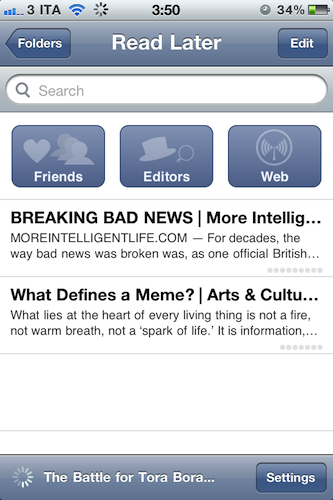According to a recent study by mobile analytics firm Localytics, 15 percent of applications for mobile devices (we assume these include iOS and Android handsets) are launched while a phone is offline, out of 3G / 4G / WiFi range. By analyzing data sent to their servers by apps that integrate Localytics’s framework in their code and comparing the app’s launch time with the delay in receiving the data (Localytics works in real time), the firm came to the conclusion 15% of apps are opened while a device can’t connect to the Internet.
Localytics records if the app is used while offline or online and can report if the connection is via 3G, Edge or WiFi. Localytics is also able to determine whether an app was actually used while online or offline by looking for large differences in the time between an app being opened and analytics data being uploaded. Having done so across the thousands of phone and tablet apps using Localytics, with over 10 million app starts per day, we found that about 15% of all app launches were made without Internet access–customer engagement that would be missed using web-centric analytics tools.
This, of course, is a major problem for app developers and something that will, once again, sparkle the discussion between evangelists of mobile web apps and those who believe native apps are the future of smartphones and tablets. A native app’s obvious advantage, in fact, should be the possibility to always display some kind of content even when in offline mode, as the app doesn’t run in the browser and thus shouldn’t require an internet connection to visualize information on screen. Indeed, several apps make great use of local caching systems – such as Instapaper and Spotify – that allow users to “download” content to consume later when the device will likely be offline – for example, during a subway trip or on an airplane. Many times, however, I’ve stumbled upon applications that in spite of their “native” nature are unable to meet these basic requirements of always-available offline access; too many iPhone and iPad apps are effectively nothing but local interfaces to web apps and tools that can’t display content without an internet connection. On the other hand, there are also applications that don’t let users cache content (presumably the best way to access anything, anywhere at anytime), but still visualize content while offline and transmit changes back to their servers when the device comes back online.
15 percent is a big number, and I’d be curious to know the detailed percentage of iOS apps by device Vs. Android apps by device –if Localytics will ever release it. On a broader level, it’s undeniable developers should do more than throw up a blank page on screen when the Internet fails. Apps like Instapaper, The New York Times, Spotify and Read It Later are great examples; others should do more, too. [via GigaOM]


